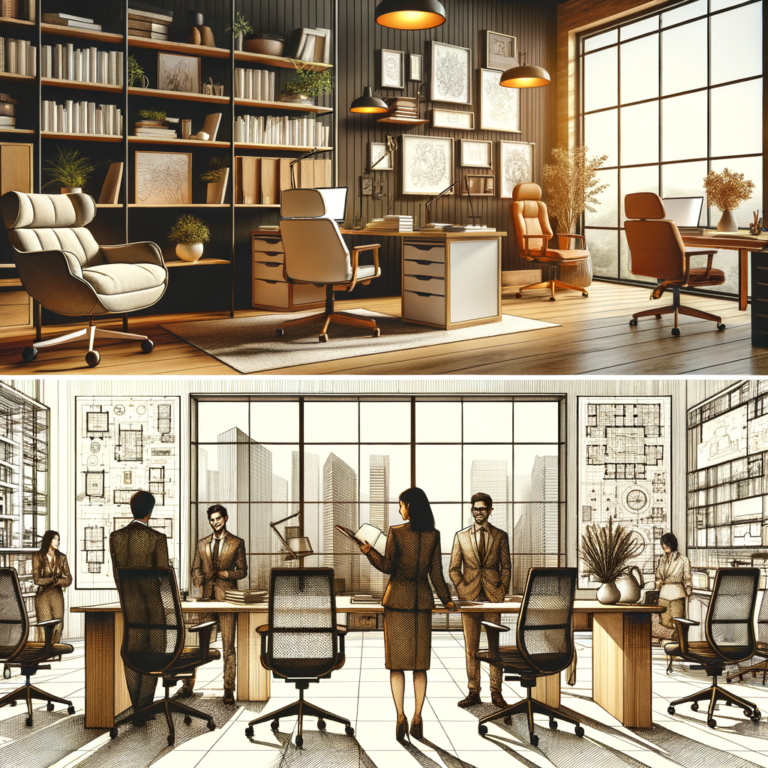In the dynamic landscape of modern business, the significance of a well-designed office space cannot be overstated. Office fitouts play a pivotal role in creating environments that foster productivity, collaboration, and employee satisfaction. This comprehensive guide aims to delve into the intricacies of office fitouts, with a specific focus on Melbourne, a bustling hub of commerce and innovation.
Understanding Office Fitouts
Office fitouts encompass the process of designing and furnishing a workspace to meet the functional and aesthetic needs of its occupants. Beyond mere aesthetics, they are instrumental in optimizing workflow, maximizing space utilization, and reflecting the company’s ethos. Understanding the intricacies of office fitouts involves recognizing that they are not just about arranging desks and chairs but rather creating an environment that enhances productivity and supports the company’s objectives.
Key Elements of Office Fitouts
A successful office fitout entails meticulous attention to various elements, including layout, furniture selection, lighting, and ventilation. Strategic planning ensures that the space is conducive to productivity while promoting employee well-being. Layout and space planning are particularly crucial as they determine the flow of work and interaction among employees. Furniture and equipment selection should prioritize ergonomics and functionality to support employee comfort and efficiency. Additionally, adequate lighting and ventilation contribute to a comfortable and healthy work environment, enhancing employee satisfaction and productivity.
Trends in Office Fitouts
Recent trends in office fitouts Melbourne emphasize adaptability and sustainability. Flexible workspaces accommodate diverse work styles, while eco-friendly designs align with corporate social responsibility initiatives. Integration of technology facilitates seamless communication and collaboration. Embracing these trends not only future-proofs the workspace but also enhances the company’s image and attractiveness to potential employees.
Factors to Consider Before Office Fitouts
Before embarking on an office fitout project, it is essential to consider factors such as budget constraints, company culture, and employee preferences. Understanding these aspects lays the foundation for a tailored and effective design solution. Budget constraints may dictate the scope of the fitout project, necessitating prioritization of essential elements. Company culture and brand identity should inform the design aesthetic and space utilization to ensure alignment with organizational values. Additionally, soliciting employee input ensures that the fitout meets their needs and preferences, fostering a sense of ownership and satisfaction.
Choosing the Right Office Fitout Partner
Selecting the right fitout partner is paramount to the success of the project. Thorough research, portfolio review, and clear communication ensure that the vision is translated into reality seamlessly. Researching potential fitout partners involves assessing their experience, expertise, and track record in delivering similar projects. Reviewing their portfolio provides insights into their design style and capabilities, helping to determine compatibility with the company’s vision. Effective communication and collaboration throughout the project are essential for addressing any challenges and ensuring alignment with expectations.
The Office Fitout Process
The fitout process typically involves several stages, including consultation, design development, construction, and handover. Collaborating closely with stakeholders and adhering to timelines are crucial for a smooth execution. The initial consultation and assessment phase allow the fitout partner to understand the company’s needs, goals, and constraints. Design development entails translating these requirements into conceptual layouts and renderings for review and approval. Construction and installation involve coordinating various trades and vendors to bring the design to life, while the final inspection and handover ensure that the completed fitout meets quality standards and client satisfaction.
Case Studies: Successful Office Fitouts in Melbourne
Examining real-life examples provides valuable insights into the diverse approaches to office fitouts. Case studies highlight challenges faced during implementation and innovative solutions employed to overcome them. By analyzing successful fitout projects in Melbourne, businesses can glean best practices and lessons learned to inform their own projects. Whether it’s a tech startup embracing open-plan layouts or a traditional firm prioritizing privacy and collaboration zones, each case study offers unique perspectives on achieving workspace optimization.
Measuring Success: Post-Fitout Evaluation
Evaluation post-fitout is essential to gauge its effectiveness. Employee feedback, coupled with performance metrics, enables continuous improvement and adaptation to evolving needs. Conducting employee satisfaction surveys allows businesses to solicit feedback on various aspects of the fitout, including layout, amenities, and comfort. Tracking productivity and efficiency metrics before and after the fitout provides tangible evidence of its impact on business outcomes. Additionally, remaining responsive to changing needs and emerging trends ensures that the workspace remains relevant and supportive of evolving work practices.
Conclusion
In conclusion, office fitouts serve as catalysts for transforming workspaces into vibrant hubs of creativity and productivity. By understanding the nuances of design, embracing emerging trends, and prioritizing user experience, businesses can create environments that inspire success. With Melbourne’s thriving business community as a backdrop, this ultimate guide equips organizations with the knowledge and insights needed to embark on successful office fitout projects.

